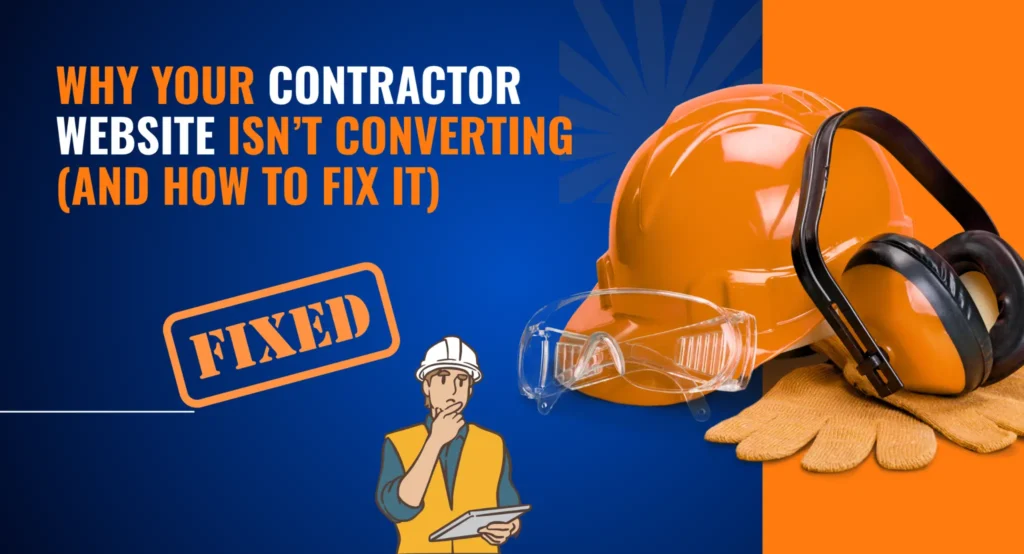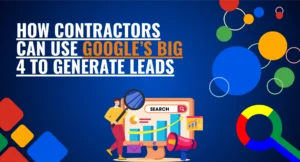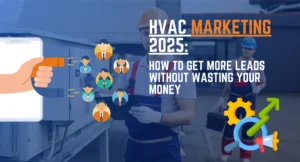Your website is the digital storefront for your contracting business. It’s often the first impression potential clients get of you, your work, and your professionalism. But here’s the hard truth: most contractor websites are costing business owners thousands of dollars every year simply because they don’t convert visitors into leads.
Think about it: you’ve already invested time and money into building your site, but if people land on it and leave without calling, filling out a form, or scheduling a consultation, you’re losing real opportunities. So why do some contractor websites convert like crazy while others sit quietly in the background? In this blog, we’ll break down the most common mistakes contractors make with their websites and—more importantly—how you can fix them to start winning more jobs.
1. Your Website Isn’t Built to Build Trust
Homeowners don’t hire contractors lightly. They’re about to let someone into their home, spend thousands of dollars, and hope the job gets done right. That means trust is everything.
Too many contractor websites look generic, outdated, or worse—like a template copied from five other businesses. If your site doesn’t look trustworthy, people won’t even bother contacting you.
Example:
Imagine a homeowner looking for a kitchen remodel. They visit two sites:
- One site has blurry photos, no testimonials, and a Gmail contact address.
- The other has professional project galleries, reviews with client names, and clear branding.
Which contractor do you think gets the call?
How to Improve Your Website Performance:
- Add real project photos (not stock images).
- Showcase client testimonials with names, photos, or video reviews.
- Highlight your licenses, certifications, and insurance.
- Create an About Us page that actually tells your story—why you started your business, your values, and how you treat clients.
Trust isn’t built with flashy graphics. It’s built with proof and authenticity.
2. Your Website Doesn’t Have a Clear Call-to-Action (CTA)
Many contractor websites are filled with information but don’t guide the visitor to take the next step. A phone number hidden in the footer or a tiny contact button won’t cut it.
A visitor should immediately know, “What do I do next?”
How to Improve Your Website Performance:
- Use strong CTAs like “Request a Free Quote,” “Book a Consultation,” or “Schedule Your Estimate Today.”
- Place your CTA in multiple spots: header, middle of the page, and footer.
- Make your phone number clickable for mobile users.
Your site shouldn’t just inform—it should convert curiosity into action.
3. Your Website Isn’t Mobile-Friendly
More than 60% of website traffic comes from mobile devices. If your site looks clunky, loads slowly, or is hard to navigate on a phone, people will leave within seconds.
How to Improve Your Website Performance:
- Use a responsive design that automatically adjusts to different screen sizes.
- Make sure forms are easy to fill out on a smartphone.
- Compress images and optimize your site speed.
If your website doesn’t work on mobile, it’s like locking your front door to half of your potential customers.
4. You’re Not Showcasing Your Work Properly
Contracting is a visual business. Homeowners want to see the quality of your work before they even talk to you. Yet, many contractor websites either don’t showcase projects—or they do it poorly.
How to Improve Your Website Performance:
- Add a Projects or Portfolio page with high-quality before-and-after photos.
- Write short descriptions for each project: what the client needed, what you did, and the result.
- Use video walkthroughs if possible—video builds more trust than pictures alone.
The more proof of your work you show, the more confidence a potential client has in you.
At this point, you might be realizing your site is guilty of one or more of these mistakes. Don’t worry—you’re not alone.
If you want a contractor website that actually brings in more leads and clients, contact Rynox Digital. We specialize in building high-performing websites designed to convert visitors into paying customers.
5. Your Messaging Is Too Generic
If your website says things like “We do quality work” or “Customer satisfaction is our priority,” you sound like every other contractor. Generic messaging doesn’t grab attention or make you memorable.
How to Improve Your Website Performance:
- Speak directly to your ideal client’s problems. Example: “Tired of contractors who don’t show up on time? We pride ourselves on reliability and clear communication.”
- Use client-focused language. Instead of “We have 20 years of experience,” say “You get a team with 20 years of proven expertise.”
- Differentiate yourself—what makes you unique compared to competitors?
Clear, specific messaging is what makes a visitor say, “Yes, this is the contractor I want.”
6. Your Website Isn’t SEO-Optimized
Even the best-looking website is useless if no one can find it. Many contractor websites don’t rank on Google because they lack proper SEO (Search Engine Optimization).
How to Improve Your Website Performance:
- Optimize each page for keywords like “kitchen remodeling in [Your City]” or “roof replacement contractor near me.”
- Add location-based content to show you serve your area.
- Regularly publish blog posts that answer common homeowner questions (like this one!).
- Claim and optimize your Google Business Profile for better local visibility.
A high-converting site doesn’t just look good—it also attracts consistent traffic.

7. Your Contact Options Are Limited
Some homeowners want to call. Others want to text. Some prefer filling out a form late at night. If your site only gives one way to reach you, you’re losing leads.
How to Improve Your Website Performance:
- Offer multiple options: phone, contact form, email, live chat, or even SMS.
- Add a fast response promise (e.g., “We’ll get back to you within 24 hours”).
- Use simple forms—don’t scare visitors off by asking for too much information upfront.
Make it as easy as possible for people to reach out in the way they prefer.
8. Your Website Feels Outdated
If your site looks like it was built in 2010, potential clients will assume your work is just as outdated. A modern, professional site shows that you take your business seriously.
How to Improve Your Website Performance:
- Update your design with clean layouts, readable fonts, and plenty of white space.
- Use consistent branding (colors, logo, tone of voice).
- Refresh your content at least once a year.
A modern site doesn’t just look better—it also performs better.
9. You’re Not Tracking Results
Finally, one of the biggest mistakes is not tracking how your site is performing. If you don’t know how many people visit, how they found you, or what pages they’re leaving on, you’re flying blind.
How to Improve Your Website Performance:
- Install Google Analytics and track visitor behavior.
- Set up conversion tracking to measure calls, form fills, or bookings.
- Test different CTAs and page layouts to see what works best.
What you measure, you can improve.
Final Thoughts
A contractor website should do more than just “look nice.” It should bring in leads, build trust, and win jobs. If your site isn’t converting, chances are it’s because of one (or more) of the mistakes above.
The good news? Every one of these issues is fixable. By improving trust signals, adding strong CTAs, optimizing for mobile, showcasing your work, refining your messaging, boosting SEO, offering multiple contact options, modernizing your design, and tracking results, you’ll transform your website into a powerful lead-generation tool.
Remember—your website isn’t just a brochure. It’s your 24/7 salesperson. And with the right setup, it can become your most valuable tool for growing your contracting business.
Ready to turn your website into a lead-generating machine?
Contact Rynox Digital today and get a high-performing contractor website that delivers real results!






